This course explores effective strategies for interacting with internal departments and external sales support structures in the automotive industry. Students will learn to communicate and coordinate effectively to enhance sales operations, resolve issues, and support customer needs.
This course provides in-depth training on the essential skills needed to interact effectively with both internal departments and external sales support structures within the automotive industry. Successful interaction with these entities is key to streamlining sales processes, addressing client needs, and optimising overall performance. Internal Departments: The course covers strategies for effective communication and collaboration with internal departments, such as sales, service, inventory management, and finance. Students will learn how to coordinate efforts, share important information, and resolve inter-departmental issues to support seamless sales operations and ensure that customer requirements are met efficiently. External Sales Support Structures: Students will also explore how to engage with external sales support structures, including suppliers, manufacturers, and service partners. The course emphasises how to leverage these external resources to enhance sales efforts, troubleshoot problems, and provide comprehensive solutions to customers. Techniques for building and maintaining strong relationships with external partners will be highlighted. Through practical exercises and case studies, students will develop skills in managing communications, negotiating solutions, and utilising available resources effectively. By the end of the course, students will be equipped to foster productive interactions with both internal and external stakeholders, ultimately contributing to improved sales outcomes and enhanced customer satisfaction.
Course Content
- The vehicle model is identified according to standard specifications
- The client’s description of a part is understood/interpreted in order to issue the correct part
- Product verification is confirmed by using open-ended probing questions
- Vehicle systems are explained in terms of their various parts, operation and their relationship to the system
- Specific components within vehicle systems are identified according to standard company procedures
- System components are located according to standard company procedures
- The organisation’s method to identify vehicle system parts is explained in terms of processes and procedures
- Parts, part number and quantity required are determined on the system according to standard procedures
- Parts are physically verified in terms of the vehicle parts identification system
- Non-accredited: Short course only
- Duration: 1h 30m
- Delivery: Classroom/Online/Blended
- Access Period: 12 Months


